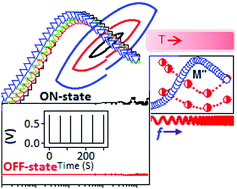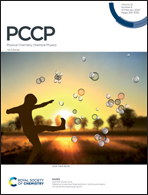Organic molecule stabilized bismuth iodide nanoparticles: a hybrid system with multifunctional physical properties†
Abstract
An organic–inorganic hybrid system of aniline stabilized bismuth iodide nanoparticles (ABI) was synthesized and investigated for its dielectric properties, AC-conductivity, polarization hysteresis and non-volatile memory performances. The X-ray diffraction result indicates the single phase crystalline nature of the nanoparticles and a microscopic image shows the homogeneous distribution of the bismuth iodide nanoparticles within the organic matrix. The material has exhibited a moderate dielectric performance via an interfacial polarization mechanism. The decrease in dielectric constant with frequency is correlated with the carrier concentration and diffusion potential, and the behaviour revealed that the halide ion mediated polaron migration controls the overall relaxation and conductivity properties of the material. Octahedral distortion of bismuth iodide, through halide ion migration, induced a hysteresis loop in polarization–electric field (P–E) characteristics. The device fabricated with the aniline stabilized bismuth iodide nanoparticles exhibited a space-charge limited current and trap assisted tunneling mechanism for the charge transport process. The non-volatile property reveals that the device has the ability to store binary information and has potential for memory applications.



 Please wait while we load your content...
Please wait while we load your content...